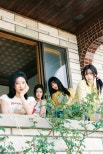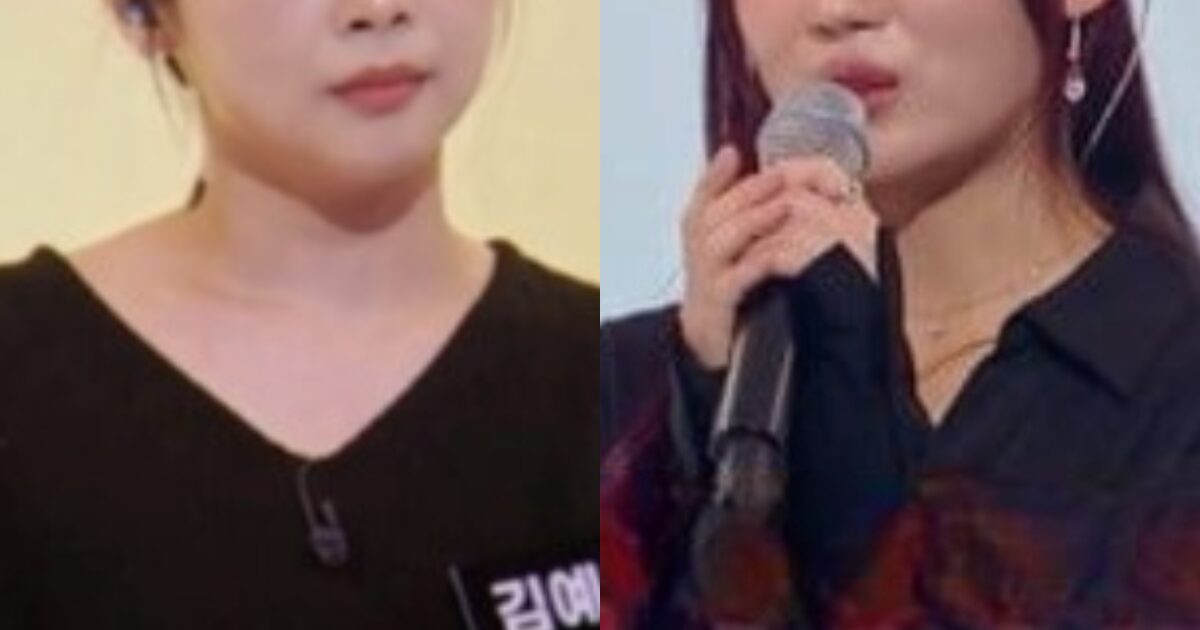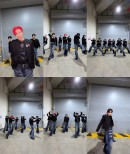Plenty of fake “live” k-pop perfomances abound. I’ve taked extensively before at kpopalypse.com about the type of techniques used to fake performances. But how do you know if a performance is real singing, “real with a little help”, or just completely mimed? People have been asking me about this a lot, so this post has the answers!

The short answer to the question posed by the title is “real unassisted live singing doesn’t happen very often, so you can just assume they are getting some help most of the time”. Those of you allergic to reading can stop reading now. For the rest of you, let’s continue.
Kpop fans are not exposed to actual completely live singing very often at all. There are a few times when this does happen, so let’s start by looking at some places where you can actually hear live k-pop vocals:
Wonder Girls’ old “Live In Thailand” concert film is quite something, because in a rare feat of k-pop honestly they didn’t mime or even use pitch-correction over a lot of it. The chorus parts of “Bad Boy” are on a pre-recorded track, but the verses are not, and you can tell… because the voices are wispy and almost vanish completely into the background in many places. This is just what normally happens when average singers have to sing a whole-ass concert.
After School are another old group that often actually sang live, at least in the verses. You can really tell in this performance of “Bang!”, especially at the one minute mark where one of the girls just can’t hit the notes.
More recently, Le Sserafim’s notorious 2024 Coachella performance is definitely live, and it sounds pretty rough vocally. The girls are prioritising dancing and “being high energy” over singing, and that’s normal for any k-pop group doing an upbeat performance for a live audience. Le Sserafim got a lot of flak for this performance but they are singing here about as well as most k-pop idols do. There’s nothing here that’s unusual except the fact that for once, you can hear their real voices without pitch correction or a backing track doing the heavy lifting.
Another rare place where you hear what idols really sound like is at encore performances, where they get group members to sing unassisted over their own backing tracks like some sort of hazing ritual. Look at how nervous Jimin is here, why is a performer with a decade of experience “paving the way” so nervous all of a sudden? It’s because he knows that people will actually hear his real voice without all the usual computer adjustments, he’s like “uh oh, I’m about to be exposed, guess I’ll just grin and make the best of it”. He’s not a good singer, and he knows it. Excuses fans made at the time like “his earpiece was messing up” are bullshit, good singers can cope with such things and still muster up a performance better than this.
However most k-pop performances aren’t as honest as the above. What k-pop fans are more used to hearing is this:
The vocals here are a combination of stuff that’s completely tracked where there’s no live vocals at all (like “all the girls are girling” sections) and stuff where the girls are singing at mumble-volume over a track that has their own voice on it, so you’re actually hearing two vocals at once (like from 1:48 to 2:02). This has the effect of smoothing out any errors somewhat, and also equalising the volumes, because if the girls aren’t confident or just out of breath (which happens often, more on that below) they can let the backings do more of the work. It’s not completely miming (listen to the hand slap come through the mic at 1:56) but it’s hardly “live vocal”. Also, sometimes this live singing isn’t actually happening in the moment, but is pre-recorded earlier and played back.
The other thing that’s common now is the rise of shows like “It’s Live” and “Killing Voice” and “First Take” etc where “it’s really live, honest” is the selling point.
These shows are actual live singing… which is then heavily pitch-corrected and smoothed over in post-editing. Whoever had to fix Jimin in the mix here surely had their work cut out for them. Autotune and similar tools are good enough now to adjust vocals while still making them sound authentically real. If you were able to go into a DAW and look at the individual tracks, it would reveal that all the vocal pitching is dead on. Real singers just don’t sing like that, even good ones.
Radio performances are usually pre-records too. Gfriend were notorious for faking their radio performances, but once again it’s not just them who did it, they were just the ones who got caught.
So… aside from obvious Gfriend-tier slip-ups like not holding the microphone up to your mouth when your singing part happens, how can you tell? The following is a list of things to look for, that indicate someone probably isn’t singing live. Note that while the absence of these things doesn’t guarantee that it IS live, the presence of them does indicate that it is not.
Sign that your favourite k-pop artist is probably faking their live performances #1
The ambience is all wrong for the location and the equipment used
No microphones anywhere in sight, plus it’s outdoors, yet the song sounds like perfect studio quality with no background noise creeping in anywhere. It’s pretty easy to tell that this is faked.
Of course you can mix in a bit of background noise if you want it to seem more “authentic”, here we have some wave noise which has been mixed into the audio, but only at strategic moments where there’s a bit of a lull in the song and it doesn’t interfere too much. Of course if you were going to go to the beach and record a song into your built-in laptop microphone for real, it wouldn’t sound like this.
Here we have someone recording with perfect crystal clear audio on her phone while walking the world’s quietest dog. Should have just dumped the “mobile phone recording” act and freed up that other hand to adminster dog treats.
This performance is real, and one giveaway is that the ambience is correct. It actually sounds like it’s being recorded indoors on a camera microphone.
Sign that your favourite k-pop artist is probably faking their live performances #2
The mouth shape doesn’t match the vocal tone
This might seem obvious to point out, but vocals come from within the body, through the mouth. Therefore the movement and shape of one’s mouth affects the vocal tone that is produced, and there’s certain physiological things that need to happen in order to get certain vocal tones. Dahyun’s piano playing here probably is live, but the singing was recorded either before or after. The giveaway is her lips, she’s barely opening her mouth in those big choruses when the singing part has her belting it out, in reality she’s just mumbling or mouthing the words while she plays the piano part.
Jihyo smiles a lot during many of her vocal performances, and why wouldn’t she – looking pretty and smiling is important when you’re an idol who wants to be loved by the public. However smiling actually changes the shape of your mouth, which in turn changes the tone of the vocal that is produced (try talking normally, and then try talking with a big toothy grin like Jihyo’s and listen to your vocal tone change). We know this performance is on a track because while her mouth is singing the correct words, the shape of her lips doesn’t match the type of sound that we hear.
A real live performance has lip movement that realistically matches the music you’re hearing. People who are actually singing contort their mouths into the required shapes to get the sound out and sounding like it’s supposed to. Notice how Ailee is a bit out of breath here as well, which leads us into…
Sign that your favourite k-pop artist is probably faking their live performances #3
The vocals don’t reflect the amount and type of movement the singers are doing
Since vocals come from within the body, the movement of the body can affect vocals heavily as well. We know that Itzy’s performance here is tracked because it just wouldn’t be possible to sing this cleanly with the type of movements the girls are doing. Check the huge leap at 1:50, it’s simply not possible to maintain that level of vocal stability while flying through the air and landing with no physical stability.
We all know nobody performs live at Waterbomb, but it would be especially difficult to perform live at Waterbomb if you were Chungha doing this very intensive choreography routine. Like a lot of Waterbomb performers she completely drops the pretense and sings half of the song with no microphone anywhere near her mouth.
When k-pop singers are actually singing live, they tend to either dumb down or simplify a complex dance routine, or just pick something simple to begin with. “Pretty Savage” has relatively undemanding movements by k-pop standards, yet the girls are still sounding a bit wobbly by the end of it due to all the moving around they have to do while singing, even though those movements aren’t much.
Chuu’s radio performance of “Heart Attack” is obviously real, and it’s a good example of just how much movement affects vocal. In sections of the song where she allows herself to stand still, she mostly gets the notes right, but as soon as a lot of movement is incorporated she quickly finds herself running out of stamina. This is completely normal for anybody. Singing and dancing simply aren’t very compatible.
Sign that your favourite k-pop artist is probably faking their live performances #4
Synchronisation issues
Miming convincingly along to a song you’ve just recorded can sometimes be tricky, because you have to remember exactly how you sung it the first time and perform it again exactly like that, with everything timed perfectly. This is not such a big deal for upbeat songs where vocal meter tends to be more squared off but becomes an issue in laid-back ballads where there’s often a fair amount of deliberate looseness to the vocal meter that’s up to the interpretation of the singer. Any rushing or dragging that you might have done on the original audio take has to be perfectly recreated for the video, turning what’s supposed to be a “loose feel” into something very precise. Gyubin gets it mostly right here but you can definitely feel the tension – there’s some places where she fails to copy her own voice on the track precisely, closing her mouth while a note is still sustaining, or moving onto the next note just a fraction too quickly.
Sometimes the sync is just all over the place. I’m not sure exactly what happened here, but with such a glaring disconnect between the lip movement and the vocal sound, you can bet that this isn’t live.
Sign that your favourite k-pop artist is probably faking their live performances #5
Eerily perfect vocal harmonies
Harmonies should always be a big red flag. Do you know how difficult it is to sing vocal harmonies and have them come out dead-on like this? Singers with a lifetime of experience struggle. One thing that struck me as odd when I first got into k-pop was the lack of harmony vocals in general – “these groups all have multiple singers, how come they sing in unison and don’t do harmony parts?” Because harmony parts are fucking impossible, that’s why. Here, the solo singing parts appear live at least in the verses, but the chorus and backing harmony is all very obviously on a track.
…and that’s without stage movement. If SoReal are faking their harmonies while doing literally zero moving about, you can bet Gfriend’s highly physical performance is even less live.
The Barberettes are a “barbershop” style vocal group which means that vocal harmonies are their bread and butter. Since they’re outside of the k-pop space, they do actual live performances more often than not, because that’s what their audience expects. Here’s one, and you can hear them making vocal mistakes too, like at 3:10 where you can hear the phrase coming in flat before they correct it. Even then they’re adding lots of vibrato, because using a lot of vibrato makes pitching easier – if you don’t hit the note dead-on you can sort of wiggle your way up to it and it doesn’t sound too bad. Vocal harmonies are hard.
Of course, when they get on k-pop shows, they fake it just like everyone else does. They’re not stupid – we can’t have a “vocal group” being less pitch-accurate than an idol group, can we, now that’d be a hit to the reputation.
Sign that your favourite k-pop artist is probably faking their live performances #6
Copy-pasted vocals
If you’re a big fan of a certain group, it’s easier to spot their fake performances, because you can compare multiple performances of the same song and look for differences. If there are simply none at all, you know that it’s on a track.
Compare Areum here at 2:40…
To here at 2:38…
To here at 2:41…
To here at 2:40…
To here at 2:42… it’s all very obviously the same pre-recorded vocal high note, the sustain length, when the vibrato kicks in and falls off, even the number of waves on the vibrato are exactly the same. Later when Areum left the group, Soyeon rerecorded this live high-note on the track and her version was used instead. (Amusingly, the film “White: Melody Of Death” starring T-ara’s Eunjung posited an alternate theory on high-note faking: there was a scene where her fictional group’s high notes were sung by a different singer behind a curtain. However this probably wouldn’t happen in practice because just putting the high note on the track is logistically a lot easier than setting up a second hidden singer and microphone, plus doesn’t have the risk of the audience potentially identifying a second singer.)
Sign that your favourite k-pop artist is probably faking their live performances #7
Incorrect microphone use (still)
K-pop artists are still pretending to use the Shure Super 55. Here Wendy continues the time-honoured SM Entertainment tradition of singing with the microphone pointed at her left tit. I won’t go on about this more because I have a whole-ass post about it that’s now over a decade old but is clearly just as relevant today as it ever was.
Sign that your favourite k-pop artist is probably faking their live performances #8
If it sounds too good to be true, it probably is
If you can’t hear any obvious pitch-correction, and your bias is just smashing it and every note is just landing absolutely perfectly – it was either edited and pitch-corrected in post, or it was recorded before. This performance probably is live, but just tampered with in post-production to fix any flat notes, which is the more common choice for singers who can actually sing.
Here’s Mamamoo’s Killing Voice vocal performance – the real one. The vocals here are totally fine and reasonable and definitely on the higher end of what k-pop singers can accomplish in general, as you might expect from a more vocally focused group.
However it’s not perfect, as it is in the version of the live that was released to the public, which has had everything pitch-corrected and smoothed over. It’s this unrealistic standard of perfection which k-pop fans have come to expect, but the truth is that your bias just can’t do it like that – and nobody else can, either.
That’s all for this post! Kpopalypse shall return!



















 English (US) ·
English (US) ·